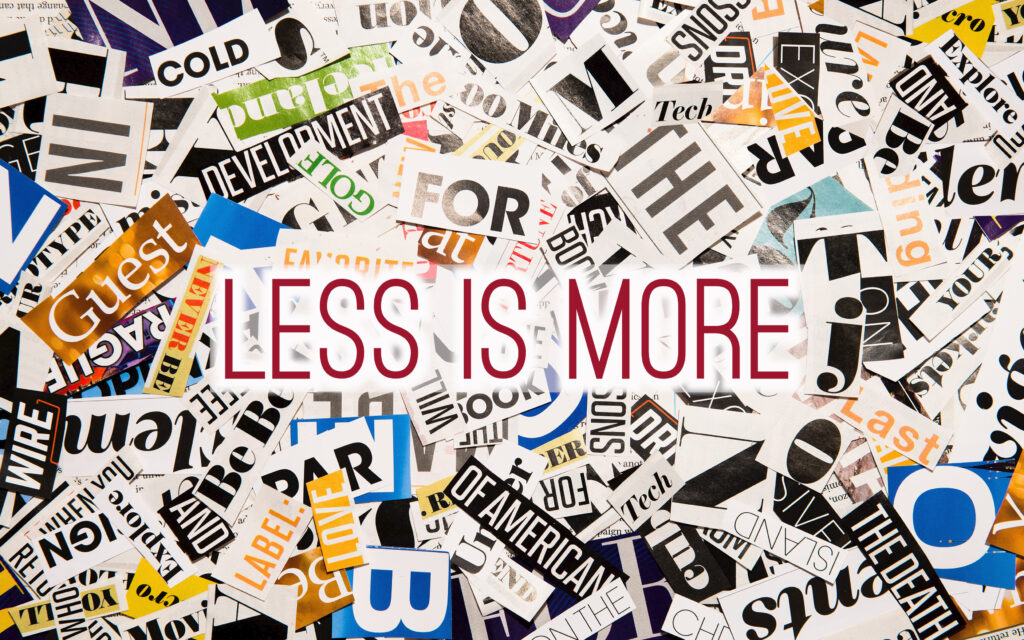A Friend Is Moving
and, as these things go, I now need to move the furniture that’s been stored in her attic and basement for the past decade. Since I downsized. Which has got me thinking.
What Used To Be Important
no longer seems to be. I love my furniture, but I am liberating it into the ecosystem. Simple feels better, cleaner, leaner, more in tune with the times.
It’s Not a New Concept
In fact, the modernist architect Ludwig Mies Van Der Rohe adopted the proverbial phrase “less is more” from the poet Robert Browning. So it’s been around for a while. The point is that simplicity of style and clarity leads to good design. In other words, edit out the nonessential so you‘re only left with what’s necessary.
You Can See
where I’m going with this. Can we all just agree that we have too much to say? Seriously. And our audiences are overwhelmed. We’re all suffering from sensory overload. So how do you stand out as a presenter? Keep it tight; say less; leave them wanting more. Let’s look at a few ways to trim the fat.
Use Fewer Adjectives
I’m the first to say I love a good adjective (and a juicy verb), but do we always need two? “The product is new and innovative. The plan is tactical and strategic. We’re going to adapt and develop. We’ll review our progress and momentum as we advance and move forward.”
And check out this actual quote I found as I was Googling today’s topic: “Simplicity and minimalism can often be more effective and appealing than complexity and excess.” See what I mean? Aim for one adjective and let it be.
One Level: One Example
When we explain complexity, we typically become too complex and go too deep. Try using just one level of explanation, and begin with the easiest.
The easiest way to say this is…
The bottom-line explanation is…
One example of how this works is…
I could go more deeply, but the most straightforward analysis is…
Stop Before You Think You Want To
You know that little voice in your head that says, “I think I’m going on too long”? Listen to it because it’s probably right! More info diffuses the point. It rarely sharpens it.
Editing Is Hard
When Mark Twain said, “If you want me to give you a two-hour presentation, I am ready today. If you want only a five-minute speech, it will take me two weeks to prepare,” he wasn’t kidding. I totally understand that editing takes time and energy. But a little shaving off here and there can make a huge difference. Shall we start?
‘Nuf said!
Be the happy recipient of more great tips and techniques, along with intelligent musings on the state of communications, by signing up for Diane Ripstein’s regular NewsNotes right here.
